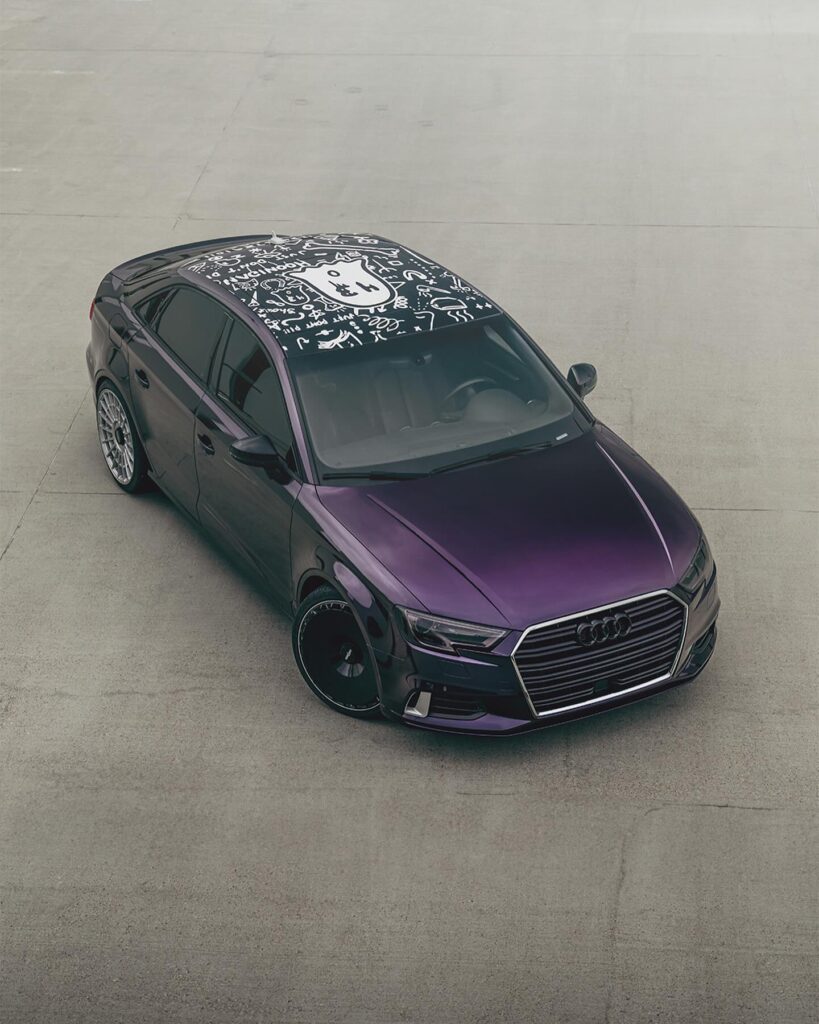In the world of automotive detailing, protecting your vehicle from the elements is more important than ever. Whether you’re battling the brutal Texas sun or the unpredictable weather in Fort Worth, a reliable solution is essential to keep your car looking new for longer. One of the most effective ways to safeguard your vehicle’s paint job is through ceramic coatings.
But as technology evolves, so do the products we use for car protection. Enter graphene coatings—a newer innovation that’s quickly gaining attention. But how do these coatings compare? What exactly is the difference between ceramic coatings and graphene coatings? Let’s dive deep into these two popular options and help you make the best decision for your vehicle’s needs.
If you’re in Fort Worth, TX, and looking for a professional touch, AutoPro DFW is here to help. From ceramic to graphene, we offer top-notch services to protect your car and keep it looking great.
What Are Ceramic Coatings?
Ceramic coatings are liquid polymers that bond to the surface of your car’s paint, forming a protective layer. This layer helps to shield your vehicle from a variety of environmental contaminants, such as dirt, water, and bird droppings, while also enhancing the gloss and depth of the paint.
The most common component of ceramic coatings is silica dioxide (SiO2), which creates a smooth, hydrophobic surface. The main advantage of ceramic coatings is their ability to repel water, making it easier to wash and maintain your car. In essence, ceramic coatings form a barrier between your car’s paint and the outside world.
What Are Graphene Coatings?
Graphene coatings are an advanced form of car protection that incorporates graphene oxide or pure graphene—a material known for its strength and unique properties. Graphene is one of the most robust substances discovered, being 200 times stronger than steel, while also being incredibly lightweight and flexible.
Graphene coatings work similarly to ceramic coatings but offer additional benefits, such as enhanced durability and better heat resistance. With graphene’s advanced molecular structure, these coatings bond more tightly to the paint surface, providing a stronger, more effective layer of protection.
Key Differences Between Ceramic and Graphene Coatings
Now that we have a basic understanding of both types of coatings, let’s break down the key differences between ceramic coatings and graphene coatings.
1. Durability
- Ceramic Coatings: While ceramic coatings are incredibly durable, they tend to degrade over time, especially if exposed to harsh elements like UV rays or acidic contaminants.
- Graphene Coatings: Graphene coatings are more durable than ceramic coatings, thanks to the strength of graphene. This enhanced durability means your vehicle will be better protected for a longer period, even against harsher conditions.
2. Hydrophobic Properties
- Ceramic Coatings: Ceramic coatings have excellent hydrophobic properties, which means they cause water to bead and roll off the surface. This makes washing easier and prevents water spots from forming.
- Graphene Coatings: Graphene coatings take hydrophobic properties to the next level. Thanks to the unique molecular structure of graphene, the water-repellent effect is even stronger, providing superior beading and faster drying times.
3. Scratch Resistance
- Ceramic Coatings: While ceramic coatings do provide some level of scratch resistance, they are not completely immune to swirls and scratches. Over time, certain contaminants may still leave marks on the paint.
- Graphene Coatings: Graphene coatings are generally more resistant to scratches, swirls, and other imperfections. Their enhanced hardness makes them better at resisting damage from harsh debris, making them an excellent choice for cars that undergo frequent wear and tear.
4. UV Protection
- Ceramic Coatings: Ceramic coatings offer protection from UV rays, helping to prevent oxidation and fading over time. However, prolonged exposure to the sun may still cause some degradation.
- Graphene Coatings: One of the biggest advantages of graphene coatings is their superior UV protection. The graphene particles create a stronger shield against UV rays, which helps prevent oxidation and keeps the car’s paint looking vibrant for longer.
5. Ease of Application
- Ceramic Coatings: Applying ceramic coatings is relatively straightforward, but it does require careful attention to detail. The surface must be prepped properly, and curing time is necessary to ensure a durable bond.
- Graphene Coatings: Graphene coatings are slightly more complex to apply than ceramic coatings. They require a higher level of precision, but the results can be worth the extra effort. That being said, many enthusiasts prefer the results they get from a properly applied graphene coating.
Advantages of Ceramic Coatings
Despite the rise of graphene coatings, ceramic coatings remain a popular choice for many car owners. Let’s take a look at some of the key advantages of ceramic coatings.
1. Affordability
Compared to graphene coatings, ceramic coatings are often more budget-friendly. For car owners who want solid protection without breaking the bank, ceramic coatings are an excellent option.
2. Proven Effectiveness
Ceramic coatings have been around for longer than graphene coatings and have a proven track record of performance. They provide excellent protection against water spots, dirt, and other contaminants.
3. Ease of Maintenance
Ceramic coatings are relatively easy to maintain. Regular washing is typically all that’s needed to keep the coating effective and your vehicle looking sharp.
Advantages of Graphene Coatings
Graphene coatings are newer to the market, but they offer several advantages that make them stand out.
1. Enhanced Durability
Graphene coatings are incredibly durable and can last longer than ceramic coatings, especially when exposed to harsh conditions. Their high resistance to scratches and oxidation makes them an attractive choice for those looking for long-term protection.
2. Better Water Repellency
Thanks to graphene’s molecular structure, water repels faster and more effectively, keeping your car cleaner for longer periods. Graphene coatings offer a superior hydrophobic effect compared to ceramic coatings.
3. Improved Heat Resistance
Graphene coatings have superior heat resistance, making them ideal for vehicles that are exposed to extreme heat or high temperatures. This makes them an excellent choice for hot climates like Texas.
How Long Do Ceramic and Graphene Coatings Last?
Ceramic Coatings
On average, ceramic coatings last between 1 to 3 years, depending on factors such as the quality of the coating, application process, and maintenance.
Graphene Coatings
Graphene coatings are designed to last longer, typically offering protection for up to 5 years, making them a better long-term solution for vehicle protection.
Which Coating is Right for You?
Choosing between ceramic and graphene coatings comes down to your priorities. If you’re looking for a more affordable, proven option and are okay with reapplying the coating every few years, ceramic coatings may be the best choice for you.
However, if you want the latest in vehicle protection technology and are willing to invest in long-term durability, graphene coatings may be the right fit.
Why Choose AutoPro DFW for Your Coating Needs?
When it comes to protecting your vehicle, AutoPro DFW is the place to go for top-quality ceramic and graphene coatings in Fort Worth, TX. Our expert technicians ensure that your car receives the best possible protection with the most advanced products available. Whether you’re interested in ceramic coatings for budget-friendly durability or graphene coatings for maximum protection, we’ve got you covered.
AutoPro DFW Serving the Rivers Edge Community and Beyond in Roanoke, TX
AutoPro DFW is dedicated to serving the diverse needs of the local community of Roanoke, TX, including individuals residing in neighbourhoods like Rivers Edge. With its convenient location near landmarks such as Northwest ISD Stadium and major intersections like TX-114 & Ben-Bert Rd, (coordinates: 33.043516, -97.363764), we offer Ceramic Coating services.
Get the Ceramic Coating services in Roanoke, TX at Rivers Edge.
Navigate from Rivers Edge to AutoPro DFW Now
Conclusion: Protect Your Investment with the Right Coating
Both ceramic and graphene coatings provide exceptional protection for your vehicle, each offering unique advantages. If you’re looking for long-lasting durability and superior protection against water, scratches, and UV rays, graphene coatings are a fantastic option. However, ceramic coatings are still an excellent, cost-effective solution for those looking for solid protection and ease of maintenance.
No matter which option you choose, AutoPro DFW is here to help you make the right decision and apply the perfect coating for your needs. Protect your investment and enjoy a cleaner, more durable vehicle with the right coating.
FAQs
-
What is the main difference between ceramic and graphene coatings?
The primary difference lies in their durability and effectiveness. Graphene coatings are more resistant to scratches, UV rays, and heat, while ceramic coatings offer great protection at a more affordable price.
-
How long do ceramic coatings last?
Ceramic coatings typically last between 1 and 3 years, depending on maintenance and the environment in which the car is driven.
-
Can I apply graphene coatings myself?
While it’s possible to apply both ceramic and graphene coatings yourself, AutoPro DFW recommends professional application for optimal results.
-
Are graphene coatings worth the investment?
If you’re looking for long-term durability and superior protection, graphene coatings can be an excellent investment, offering longer-lasting protection than ceramic coatings.
-
Can I use both ceramic and graphene coatings on the same vehicle?
While it’s not necessary to combine both types of coatings, some car owners choose to apply a graphene coating over a ceramic coating for added protection. However, it’s best to consult a professional for guidance.





